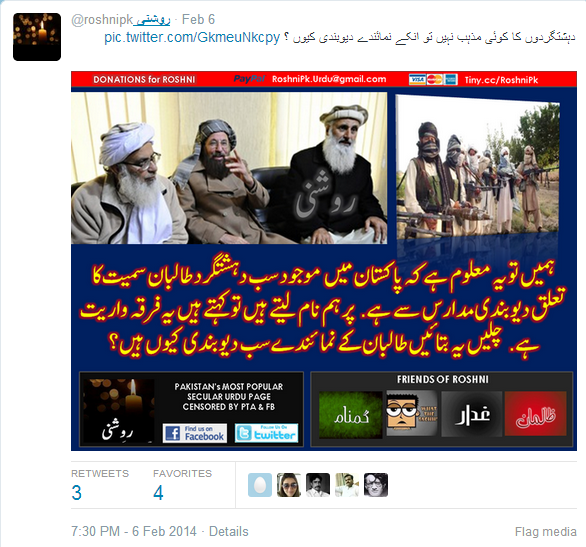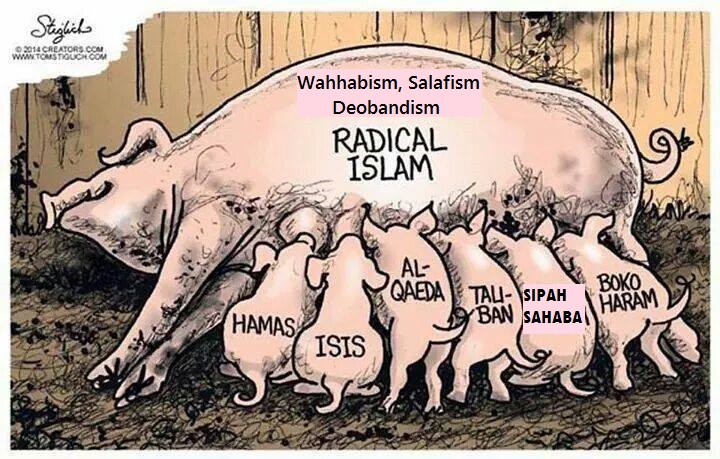Deobandi-inspired Pakistani youths fighting in Chechnya, Iraq and Syria – by Tahir Kamran (Cambridge University)
More thoughts on Takfir — Tahir Kamran
My last column ‘Takfir and terrorism’ evoked some responses which were brusque in articulation but well-meaning in intent and purpose. Some pointed out the column’s ‘inadequacies’ with candour. These responses, however, goaded me to reflect on the matter of takfir afresh, and also to deliberate on the process of it taking the centrestage of Muslim hermeneutics by the last years of the 19th century.
This article aims to address these issues in the light of these responses, underscoring takfir in the South Asian perspective.
One critique alluded to the flaw in the context in which the whole argument was played out, as I missed out on mentioning Shaikh Ahmed Sirhindi or Mujaddid Alf Sani, as he is generally called, and his famous pamphlet Radd-i-Rawafiz in which he condemned adherents to the Shia faith. Similarly, it was also pointed out that such luminaries as Shah Waliullah and Shah Abdul Aziz (with his anti-Shia treatise against Tuhfah-i-Asna-i-Ashriyya), among others in the pre-modern period, resorted to Shia condemnation which obviously cannot be refuted.
Takfir, of course, has a long history and, disturbingly enough, some Sufi orders ended up excluding those sects and groups following different versions of Islam particularly by the onset of the modern period. Chishti Sufis like Suleman Taunsvi and Shams ud Din Sialvi, according to Tarikh-i-Mashaikh-i-Chisht by Khalique Ahmed Nizami, openly and explicitly denounced Shias. Much of the proliferation of that exclusionary trend was because of foreign influences that South Asian Islam had started absorbing from the 18th century onward.
Puritan influence spawned by the Wahabi movement had found substantial following in the subcontinent. These (foreign) influences had a tangible impact, not only on Sunnis but also on Shias. Najaf and Qum had cast the influence on Indian Shia populace contemporaneously. However, one must not lose sight of the fact that until the closing decades of the 18th century the dominant Muslim discourse and general religious practice had been inclusive of differences in religious articulation. A Sufi could switch allegiance to another Sufi order without any fear of denunciation or social proscription. No one ever pronounced any takfiri fatwa against any one following that course of action.
One must, however, not infer that sectarian tension was absolutely non-existent during the medieval or early-modern period. Sectarian affiliations did manifest at times in quite acerbic fashion but their frequency was not that great. Violence based on religion generally became less frequent, particularly when the empire system was well-entrenched and a monarch was wielding absolute political authority.
Mughals, at the pinnacle of their imperial power, made sure that sectarian/communal bonhomie prevailed. With the waning of the imperial power vested in the King, fissiparous tendencies found expression in religious violence in India, a polity with multiple religious identities. Thus takfir, if it existed at all, remained a peripheral practice which gravitated steadily to a seminal position during the high noon of the British power. Then Muslim clerics started demonstrating their widely contested authority by issuing fatwas against divergent sects.
The employment of modern classification methods helped sectarian boundaries to be defined and demarcated very neatly. The fuzziness that was exhibited earlier on by the Sufi orders was substituted by clearly delineated sectarian identities which were embedded in the newly-emergent phenomenon of the madrassa system, through which tradition and modernity were uncannily infused.
Darul Ulum Deoband (1867), Darul Ulum Nadwatul Ulama (1898) or Madrasa Manzar-e-Islam (established in 1904 in Bareilly) are the illustrations of those seminaries. Consequently, such categories as Deobandi and Barelvi came into wider circulation. Hence Sunni sect was further divided into sub-sects, named after the madrassa or the cult figure. More so, the sub-sects started denouncing each other as kafir.
Initially, the practice of takfir remained notional because, with the British at the helm, the translation of the notional into the realm of the political could have been dangerous, and so takfir was not practically articulated with such impunity as it was in independent Pakistan, a country ostensibly founded in the name of Islam. In that particular context, one may argue, the Fatwas of Ahmed Raza Khan Barelwi (Fatawa Rizvia), intended to declare everyone but his own sect as kafir, could not trigger violence. Despite differences, the sects mostly remained at peace with each other, barring some instances of Shia-Sunni (read Deobandi-Ahrari) clashes in UP during the 1930s.
Another critique is from a very good friend saying that the whole Muslim world has been seen in “Deobandi-bashing perspective” whereas the Arab world and North Africa hardly care about Deobandi discourse. He may be right in saying so. Despite the seeming nonchalance for the Deobandi discourse, one must be mindful of its Pan-Islamic influence from the turn of the 20th century.
Famous Islamic scholar Rashid ul Rida’s visit to Deoband in 1912, and his amiable interaction with the head teacher of Darul Ulum Deoband, Anwar Shah Kashmiri, and the subsequent tribute he paid to Ubaidullah Sindhi in his journal al-Manar says a lot about the nexus that Deoband had with the wider Muslim world. Later on, Abul Hassan Ali Nadwi, educated at Nadwatul Ulama but a Deobandi luminary too, was held in very high esteem in the Arab world because of his scholarship in Islam.
It is well known that Manzur Nomani’s takfiri treatise Irani Inqilab was commissioned by a ‘Muslim brother country’ and, later on, translated versions were arranged and circulated in several languages. Sipah-e-Sahaba operatives and Lashkar-i-Jhangvi are the splinter groups of a Deobandi political party — the latter group allegedly having links with al Qaeda.
The Afghan jihad and its aftermath brought Deobandis and Arab extremist elements very close, which is now hurting Pakistan very badly. One should not be surprised to find Deobandi-inspired Pakistani youths fighting as far as Chechnya, Iraq, Syria or any conceivable place on earth, ostensibly to revive the glory of Islam. The glory of Islam cannot be brought about by fighting with weapons and other technological instruments manufactured as a result of knowledge produced at Western academies. In order to equip oneself with knowledge, peace is a prerequisite for which one has to communicate, not fight.


